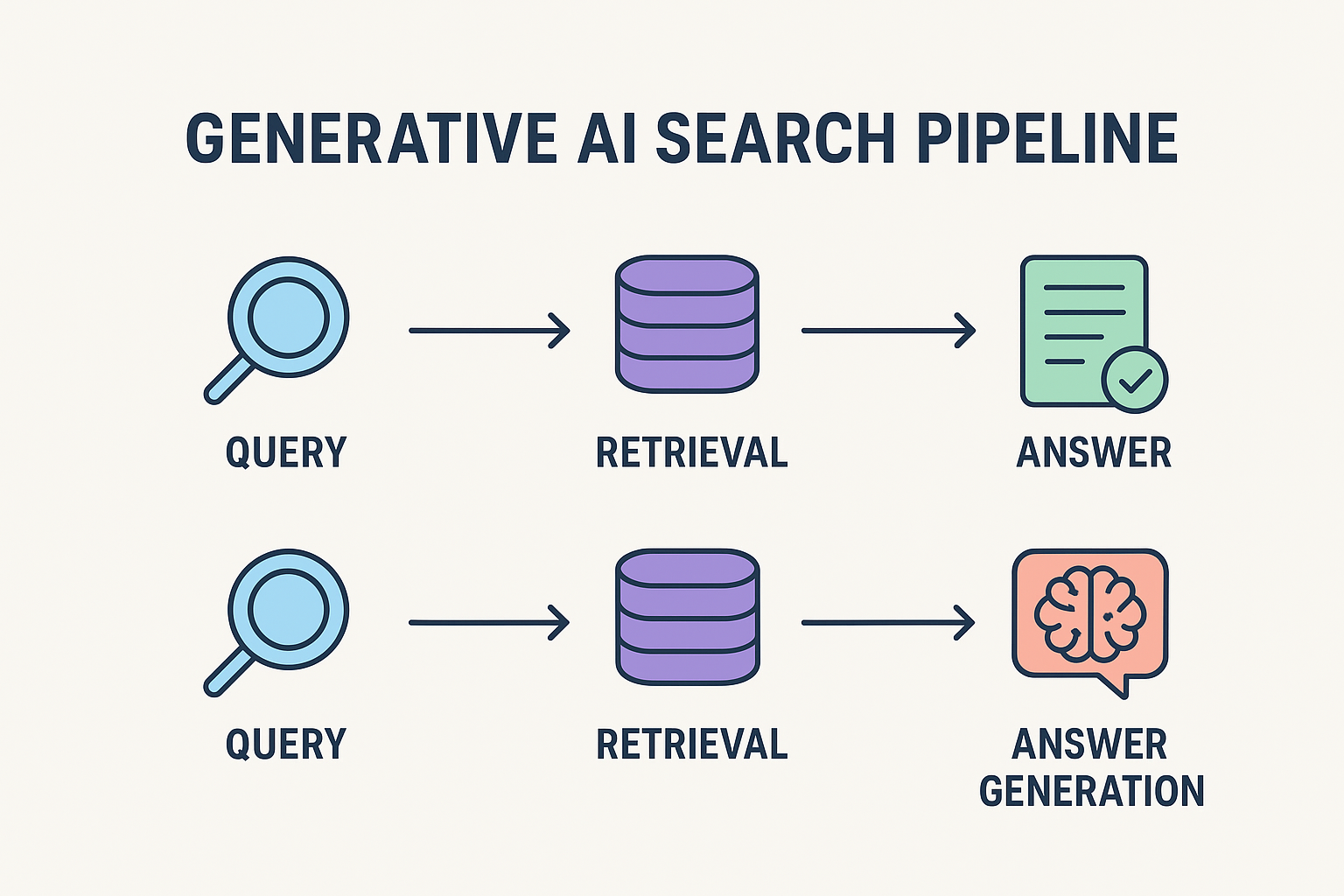Search Engine’s Endgame? How AI Is Redefining Google’s Dominance — and Why It Matters
Introduction
Search as we know it is under transformation. With every voice query, every AI chat, and every “zero-click” outcome, the established model of Google dominating web traffic is being challenged. In this blog we’ll trace how AI-driven search engines are rewriting the rules of discovery—and why it matters for publishers, brands and everyday users.
AI search is transforming discovery: answers and actions replace links and clicks, forcing publishers and brands to rethink visibility strategy.
AI search — the new rules of discovery
1. The Disruption at Hand
AI is no longer just a tool behind search—it’s now in front of it. As explained by the article in Search Engine Journal: “Traditional measures of success such as rankings, traffic and clicks are losing relevance.”
Features like Google’s “AI Overviews” and voice-assistant answers now deliver results without forcing a click. Bain reports that 80% of consumers rely on these zero-click formats in at least 40% of their searches.
This signals a shift: search isn’t about finding links anymore, it’s about getting answers.
2. How Google’s Dominance Is Being Redefined
AI Mode & Conversational Search: Google’s recent rollout of “AI Mode” shows the company embracing generative AI to deliver expert-like answers.
From Search Box to Assistant: Users now ask AI agents (“Hey Google, help me plan my trip”) instead of typing keywords.
Traffic Disruption for Publishers: Summarized answers keep users on the search results page—meaning fewer clicks to websites. According to Enders Analysis, half of publishers report significant traffic drops.
What this means: the ecosystem Google built (links → clicks → ad revenue) is evolving—and brands must evolve too to retain visibility.

3. The New Rules of Discovery & SEO
With the shift to generative AI, optimization strategies must pivot:
From Keywords to Intent: Search is now about what the user wants, not which words they typed.
GEO & AEO (Generative Engine Optimization / Answer Engine Optimization): These newer concepts focus on structuring content so AI search engines can parse and present it directly.
Structured data, Q&A format and trusted sources are becoming more important than backlinks alone.
Businesses and content creators must adapt—or risk fading into the “zero-click” shadow.
To rank for AI search, content must be structured for intent, use clear Q&A headings, schema and authoritative citations instead of chasing traditional backlinks.
4. What’s Changing for Publishers, Brands & Users
Publishers face declining traffic and must shift to new models (subscriptions, multimedia formats, AI-enhanced content).
Brands need to think beyond search rankings—visibility now includes voice assistants, chatbots and AI answer modules.
Users benefit from faster, more tailored answers—but must also reckon with risks of echo chambers, algorithmic bias and fewer alternative perspectives.
AI search stacks (see image prompt 2) differ drastically from traditional search pipelines—and that has implications for how discovery works.

5. What Comes Next — Strategies to Stay Relevant
Optimize for AI-first discovery: use conversational headings, schema markup, clear FAQ formats.
Diversify visibility channels: don’t rely solely on web search; think voice, apps, assistant integrations.
Invest in authority & transparency: AI engines prefer credible sources.
Embrace multimedia: images, video, AR are increasingly part of search journeys.
Monitor metrics beyond clicks: impressions, engagement in AI assistants, brand lift.
If your SEO strategy is unchanged, you may soon be optimizing for yesterday’s engine.
Conclusion
Google’s dominance isn’t ending—it’s evolving. The question for businesses, creators and brands is not who wins the search game—but who adapts to its new rules.
Adapting to AI search means optimizing for answers, not just rankings — invest in structured data, trusted sources and multi-modal assets to remain discoverable.
The era of links and rankings is giving way to answers and action.
If you want to remain visible, relevant and trusted—now is the time to prepare for the new front of discovery.
“The search paradigm isn’t broken—it’s being rebuilt.”
For a broader look at how AI cycles mirror past tech booms, see our article What If AI Is the Next Dot-Com Bubble?.
